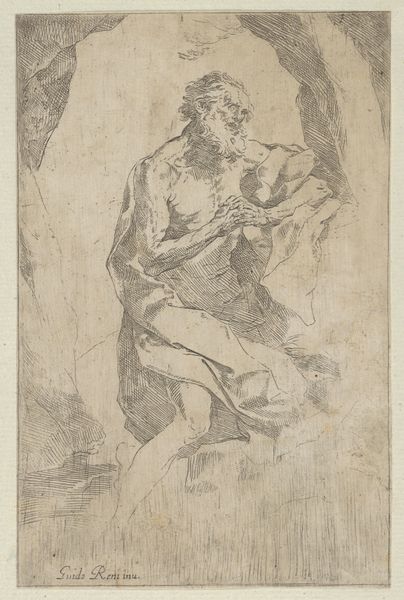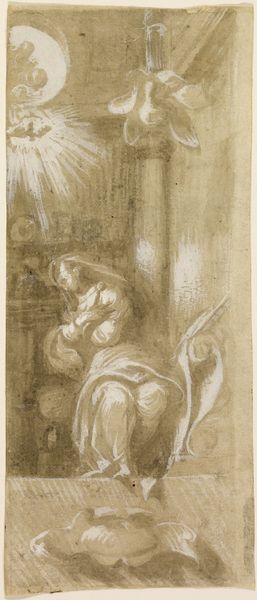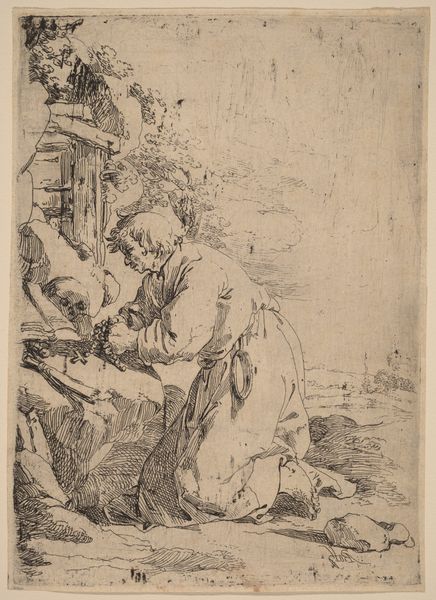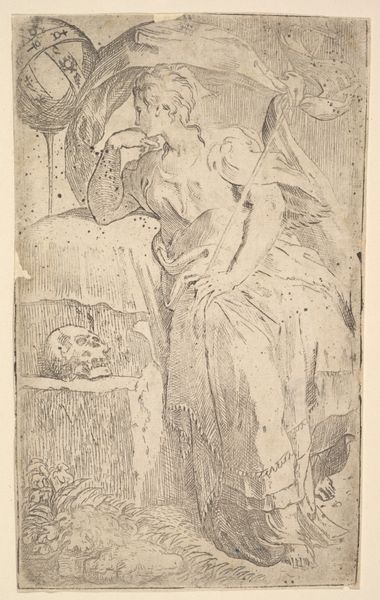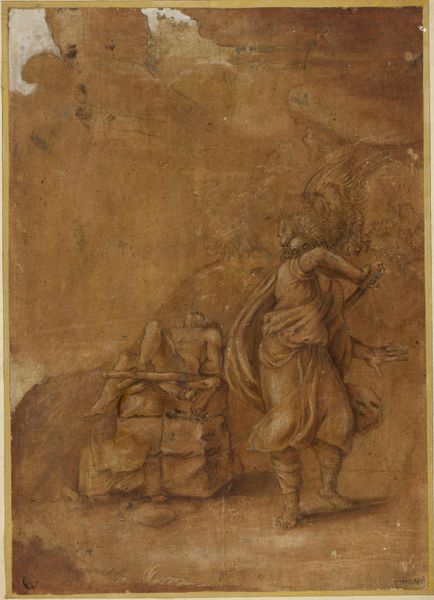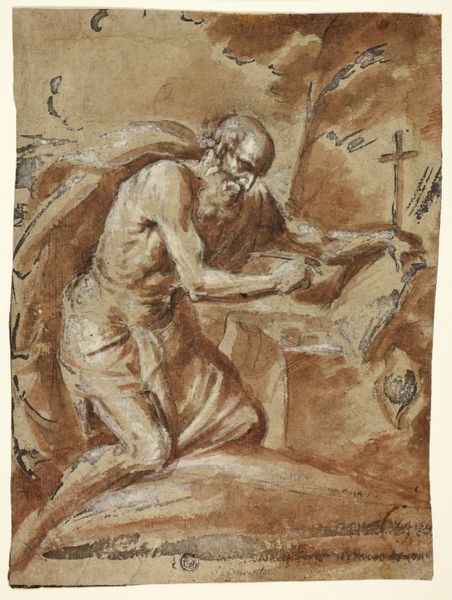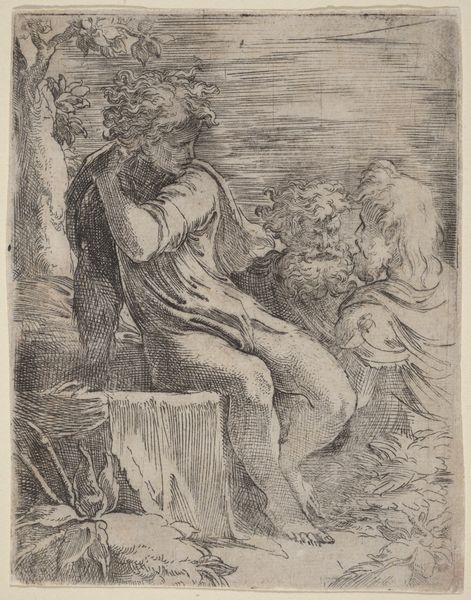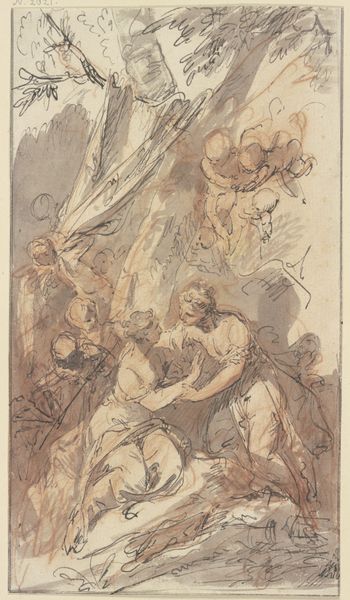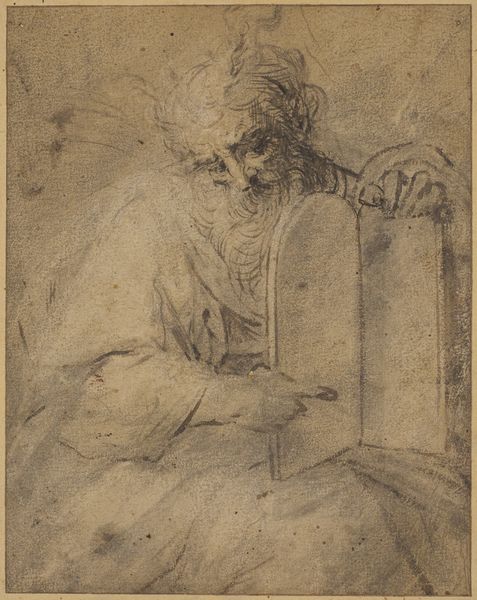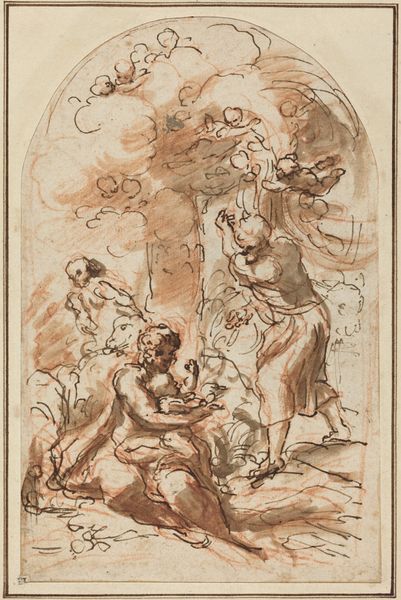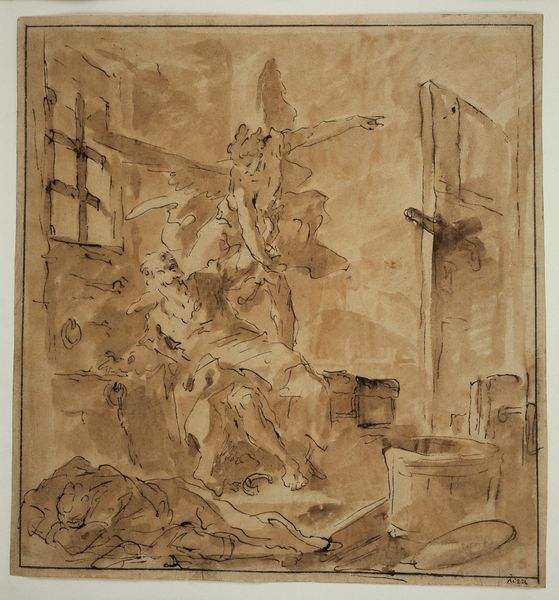
drawing, print, ink, charcoal
#
drawing
#
baroque
# print
#
charcoal drawing
#
figuration
#
form
#
ink
#
charcoal
#
history-painting
#
academic-art
Dimensions: 8-15/16 x 6-3/8 in. (22.75 x 16.2 cm)
Copyright: Public Domain
Editor: Here we have a drawing called "Vulcan," created sometime between 1600 and 1700 by an anonymous artist. It's rendered in ink and charcoal. The first thing that strikes me is how… earthy it feels, both in color and subject matter. What do you see in this piece? Curator: What I see is a visualization of power, not just physical strength, but the power to create and shape. Think about what Vulcan represents: the Roman god of fire, metalworking, and craftsmanship, often associated with the forge. In the context of 17th-century Europe, portraying Vulcan wasn't just about classical mythology; it was also a statement about labor and artistry. Where does that place this piece within intersectional narratives of gender and class? Editor: I hadn’t considered the class implications! Is the depiction of labor necessarily a progressive statement? Curator: Not always, but consider the rising merchant class and early industrialization. Representing the dignity of labor could challenge aristocratic notions of innate superiority. At the same time, we have to acknowledge the historical reality of exploitative labor practices. This image may idealize labor in ways that ignore or obscure the lived experiences of those who toiled in less romanticized conditions. Does the artist's anonymity change our interpretation at all? Editor: Possibly. An aristocratic artist might approach the subject differently than someone from the working class. But regardless, you've given me a lot to think about regarding the politics inherent in its depiction of labor and craft! Curator: Exactly. Thinking critically about art involves unpacking the power dynamics and social contexts embedded within seemingly simple images. Now, where does this intersect with the history of gender representation and patriarchy in the 17th century? Editor: It seems like there's always another layer! Thank you for expanding my understanding.
Comments
No comments
Be the first to comment and join the conversation on the ultimate creative platform.
